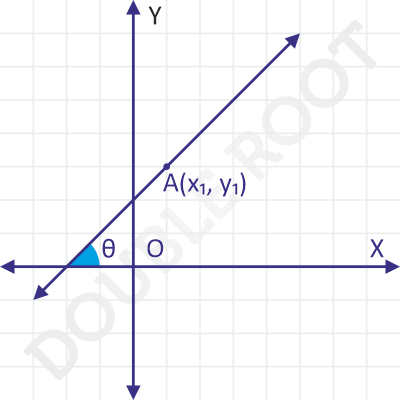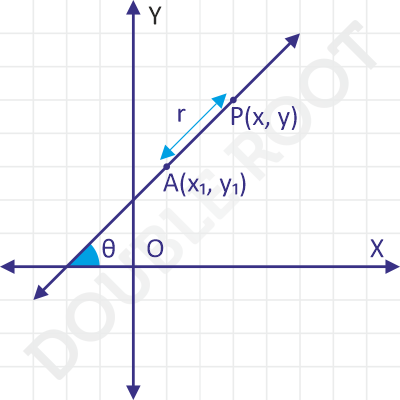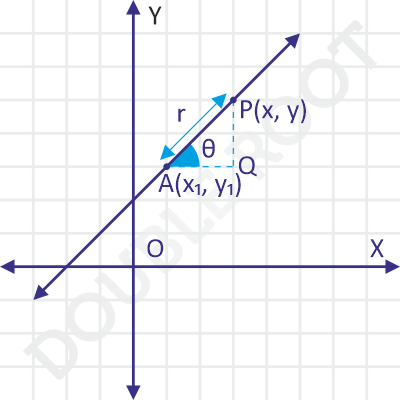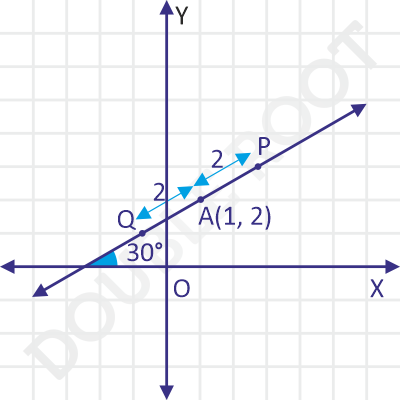In this lesson, I’ll discuss the parametric form of the equation of a straight line.
This is an important form of the equation, which looks a bit different from the rest of the forms. It is quite useful in particular problems, where it leads to much shorter methods vs. the other forms. We’ll observe this during examples.
Let’s look at the equation then.
Consider a line whose slope equals tanθ and which passes through the point A(x1, y1).

And, let P(x, y) be a point on the line which is at a distance r from the point A.

Here, r is a parameter that can change. As r changes, so does the position of the point P.
Now, the parametric equation gives us the answer to the question: Given the value of the parameter r, what are the coordinates of P (in terms of x1, y1, and θ)?
To find the relation, let’s draw AQ parallel to the X-axis and PQ parallel to the Y-axis.

Then, in ΔAQP,
cosθ = AQ/AP = (x – x1)/r
sinθ = PQ/AP = (y – y1)/r
The above relations give the coordinates of P as:
x = x1 + rcosθ
y = y1 + rsinθ
Keep changing the value of r, we’ll keep getting different positions of the point P on the line, where P is at a distance of r from the point (x1, y1).
The above two relations can also be written in a fancy way:
(x – x1) / cosθ = (y – y1) / sinθ = r
And this is the parametric form of the equation of a straight line. Instead of relating x and y directly to each other, the equation relates both x and y indirectly, to a ‘parameter’ (r in this case). Keep changing the parameter, and we’ll keep getting different points on the line.
As an example, let A be (1, 2) and θ = 30°. Then the parametric equation of this line looks like:
(x – 1) / cos30° = (y – 2) / sin30° = r
Or, any point the line will have the coordinates of the form (1 + rcos30°, 2 + rsin30°), where r denotes the distance between this point and the point (1, 2).
If we take r as 2, we’ll get the coordinates of the point P as (1 + √3, 2 + 1). The point P lies on the line, and is at a distance 2 units from the point (1, 2).
There will also be another point at the same distance from (1, 2). We can get its coordinates by taking r as -2. This doesn’t mean that the distance is negative. It means that the point for which r = -2 is on the opposite direction from the point where r = +2.
We’ll get the coordinates of this other point Q as (1 – √3, 2 – 1). Here’s how things look.

Hope you have some idea about how the parametric equation works.
Finally, here’s a simulation where you can play around with the parametric equation of a line.
You can change r and θ and see how the point P changes. Does its coordinates satisfy the formula that we derived?
That’s all for now. Things will become a little more clear when I discuss a few examples.
Lesson Summary
- The parametric equation of a straight line passing through (x1, y1) and making an angle θ with the positive X-axis is given by (x – x1) / cosθ = (y – y1) / sinθ = r, where r is a parameter, which denotes the distance between (x, y) and (x1, y1).
In the next lesson, I’ll discuss a few related examples. See you there!